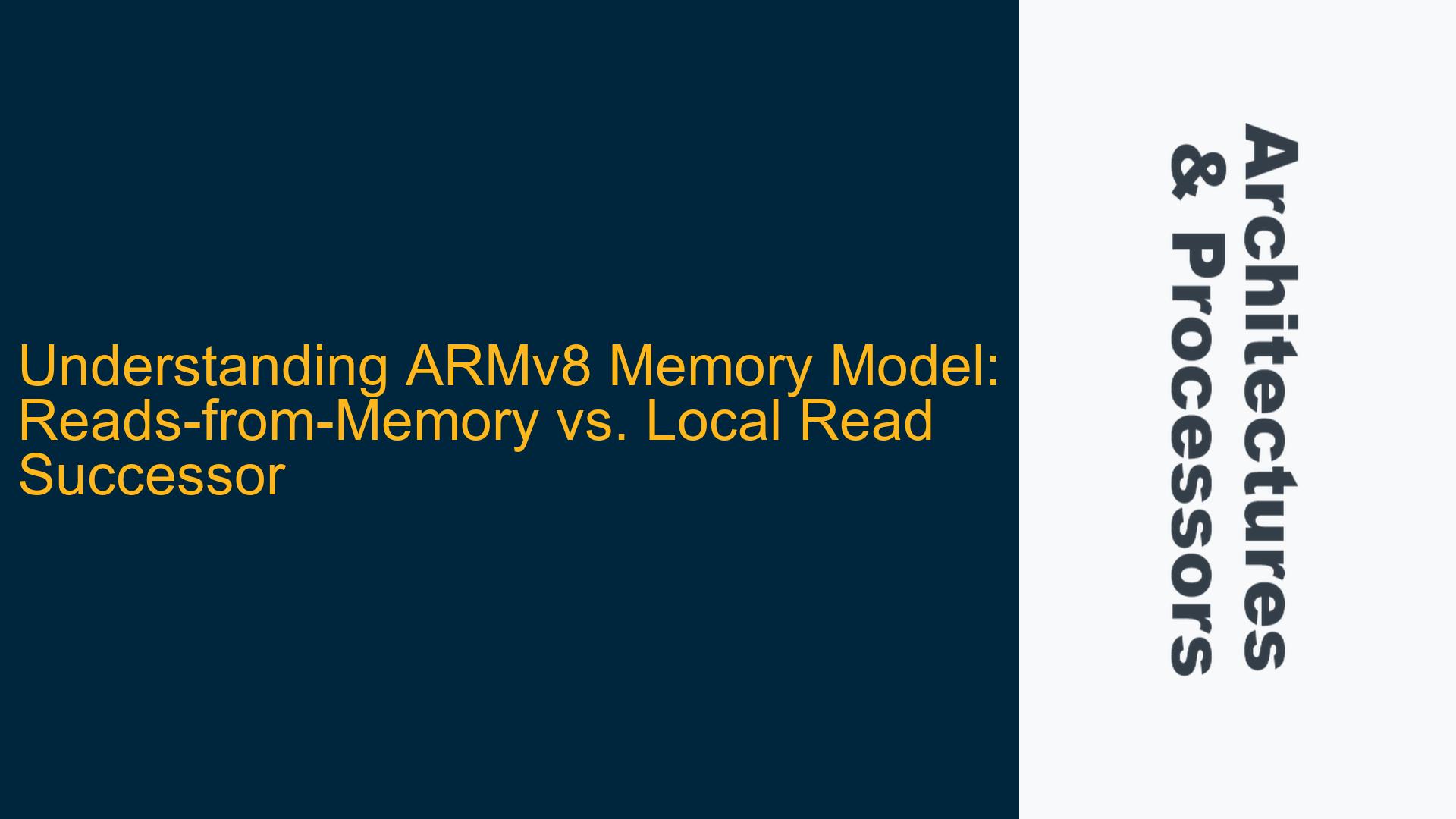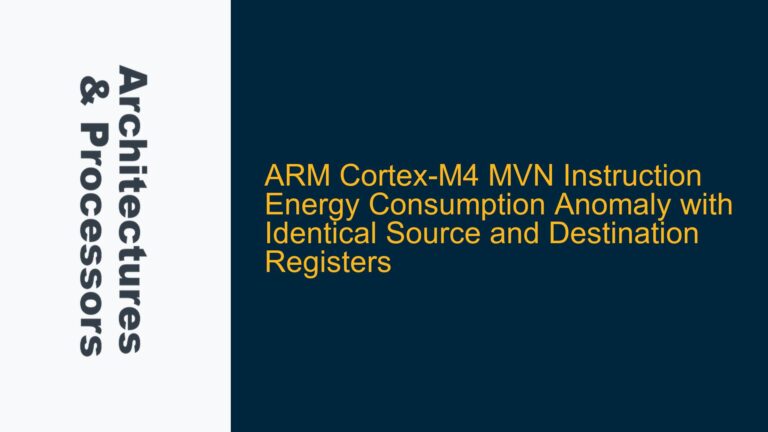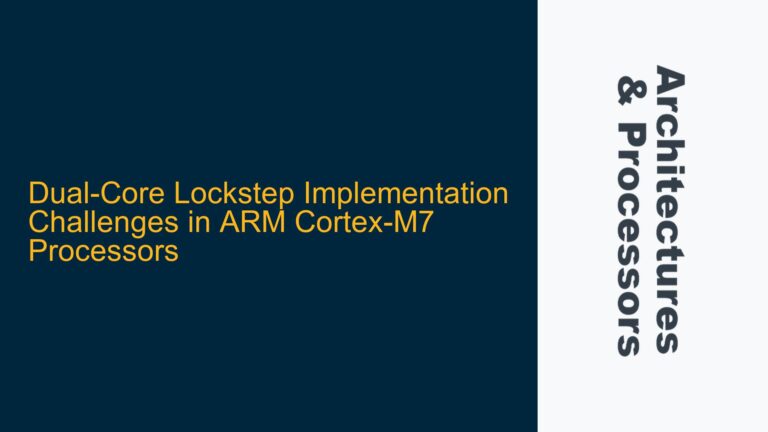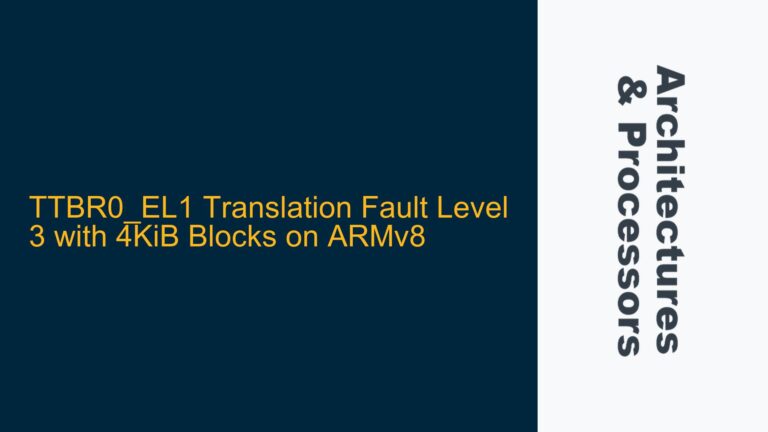ARMv8 Memory Model Definitions: Reads-from-Memory and Local Read Successor
The ARMv8 architecture defines two critical concepts in its memory model: Reads-from-Memory and Local Read Successor. These concepts are foundational to understanding how memory operations are ordered and observed in a multi-core or multi-threaded environment. The distinction between these two terms is subtle but significant, especially when dealing with memory consistency, cache coherency, and synchronization across different processing elements (PEs).
Reads-from-Memory is defined as follows:
A Memory Read effect E2 Reads-from-memory a Memory Write effect E1, if and only if E1 and E2 are to the same location and E2 takes its data from E1.
This definition implies that a read operation (E2) observes the value written by a write operation (E1) to the same memory location. The key point here is that E1 and E2 can be performed by different observers (e.g., different cores or threads). This is a global property, meaning it applies across the entire system, regardless of which processing element performed the operations.
Local Read Successor is defined as:
A Memory Read effect E2 of a Location is the Local read successor of a Memory Write effect E1 to the same Location if E1 appears in program order before E2 and there is no Memory Write effect E3 to the same Location appearing in program order between E1 and E2.
This definition introduces the concept of program order, which is specific to a single observer (e.g., a single core or thread). The Local Read Successor relationship requires that the read operation (E2) directly follows the write operation (E1) in program order, with no intervening writes to the same location. This is a local property, meaning it applies only within the context of a single observer.
The primary difference between these two concepts lies in their scope:
- Reads-from-Memory is a global relationship that can span multiple observers.
- Local Read Successor is a local relationship that applies only within a single observer’s program order.
Implications of Observer Scope in Memory Consistency
The distinction between global and local memory relationships has significant implications for memory consistency and cache coherency in ARMv8 systems. Understanding these implications is crucial for debugging and optimizing multi-core applications.
In a multi-core system, each core (or observer) has its own view of memory, which may include local caches. The ARMv8 memory model ensures that memory operations are consistent across all observers, but this consistency is achieved through a combination of hardware mechanisms (e.g., cache coherency protocols) and software techniques (e.g., memory barriers).
When a write operation (E1) is performed by one observer, the value written may not immediately be visible to other observers due to caching and memory hierarchy effects. For a read operation (E2) performed by another observer to observe the value written by E1, the system must ensure that the cache coherency protocol has propagated the write to all relevant caches. This is where the Reads-from-Memory relationship comes into play. It ensures that E2 observes the value written by E1, even if E1 and E2 are performed by different observers.
On the other hand, the Local Read Successor relationship is concerned with the order of operations within a single observer. This relationship is critical for ensuring that a read operation (E2) observes the most recent write operation (E1) performed by the same observer, without being affected by intervening writes (E3). This is particularly important in single-threaded execution, where the program order must be preserved to ensure correct behavior.
The removal of the "from the same observer" clause in the latest ARMv8 specification (version K.a) has caused some confusion. However, the inclusion of the phrase "appearing in program order" in the definition of Local Read Successor implicitly restricts the relationship to a single observer. Program order is a property of a single execution stream, and it does not make sense to talk about program order across different observers. Therefore, the Local Read Successor relationship remains a local property, even though the explicit "from the same observer" clause has been removed.
Debugging and Resolving Memory Consistency Issues
Memory consistency issues in ARMv8 systems often arise due to misunderstandings or misapplications of the Reads-from-Memory and Local Read Successor relationships. These issues can manifest as subtle bugs, such as data races, stale data reads, or incorrect synchronization. Below, we outline a detailed approach to debugging and resolving these issues.
Identifying Memory Consistency Issues
The first step in debugging memory consistency issues is to identify the symptoms. Common symptoms include:
- Data Races: Two or more threads accessing the same memory location concurrently, with at least one access being a write.
- Stale Data Reads: A thread reading a value that does not reflect the most recent write to the memory location.
- Incorrect Synchronization: Threads failing to synchronize correctly, leading to deadlocks or livelocks.
Once the symptoms are identified, the next step is to trace the memory operations involved. This requires a detailed understanding of the program’s memory access patterns, including the order of reads and writes, the locations being accessed, and the observers performing the operations.
Analyzing Memory Access Patterns
To analyze memory access patterns, you can use tools such as ARM’s CoreSight or third-party debugging tools that provide visibility into cache states and memory transactions. These tools can help you determine whether a read operation (E2) is observing the correct write operation (E1) and whether the Reads-from-Memory relationship is being satisfied.
For example, if a read operation (E2) is observing stale data, you need to determine whether the write operation (E1) has been propagated to the observer performing E2. This may involve checking the cache coherency state of the memory location and ensuring that the appropriate memory barriers or synchronization primitives are in place.
Ensuring Correct Program Order
For issues related to the Local Read Successor relationship, the focus should be on ensuring that the program order is preserved within each observer. This involves verifying that there are no intervening writes (E3) between the write operation (E1) and the read operation (E2) in the program order.
If the program order is not being preserved, this may indicate a compiler optimization issue or a bug in the code. For example, the compiler may have reordered memory operations, or the code may have unintended side effects that alter the program order. In such cases, you may need to use compiler directives (e.g., volatile or __sync_synchronize) to enforce the correct order of operations.
Implementing Memory Barriers and Synchronization Primitives
Memory barriers and synchronization primitives are essential tools for ensuring memory consistency in ARMv8 systems. Memory barriers enforce ordering constraints on memory operations, ensuring that certain operations are completed before others. Synchronization primitives, such as locks or atomic operations, ensure that multiple threads access shared memory locations in a controlled manner.
When implementing memory barriers, it is important to choose the appropriate type of barrier for the specific memory consistency issue. ARMv8 provides several types of memory barriers, including:
- Data Memory Barrier (DMB): Ensures that all memory accesses before the barrier are completed before any memory accesses after the barrier.
- Data Synchronization Barrier (DSB): Ensures that all memory accesses and other operations (e.g., cache maintenance) before the barrier are completed before any operations after the barrier.
- Instruction Synchronization Barrier (ISB): Ensures that all instructions before the barrier are completed before any instructions after the barrier, and flushes the instruction pipeline.
For example, if you are dealing with a Reads-from-Memory issue where a read operation (E2) is not observing the correct write operation (E1), you may need to insert a DMB or DSB barrier between the write and read operations to ensure that the write is propagated to all observers before the read is performed.
Example: Debugging a Stale Data Read
Consider a scenario where a thread (Observer A) writes a value to a memory location (E1), and another thread (Observer B) reads the value from the same location (E2). However, Observer B is reading a stale value, indicating that the Reads-from-Memory relationship is not being satisfied.
To debug this issue, you would:
- Use debugging tools to trace the memory operations performed by Observer A and Observer B.
- Verify that the write operation (E1) by Observer A has been propagated to Observer B’s cache.
- Check for any missing memory barriers or synchronization primitives that may be causing the stale read.
- Insert a DMB or DSB barrier between the write and read operations to ensure that the write is visible to Observer B before the read is performed.
By following these steps, you can identify and resolve memory consistency issues related to the Reads-from-Memory and Local Read Successor relationships in ARMv8 systems.
Conclusion
Understanding the distinction between Reads-from-Memory and Local Read Successor is essential for developing and debugging multi-core applications on ARMv8 systems. These concepts define how memory operations are ordered and observed, and they play a critical role in ensuring memory consistency and cache coherency. By carefully analyzing memory access patterns, enforcing correct program order, and implementing appropriate memory barriers and synchronization primitives, you can effectively resolve memory consistency issues and optimize the performance of your ARMv8-based systems.






